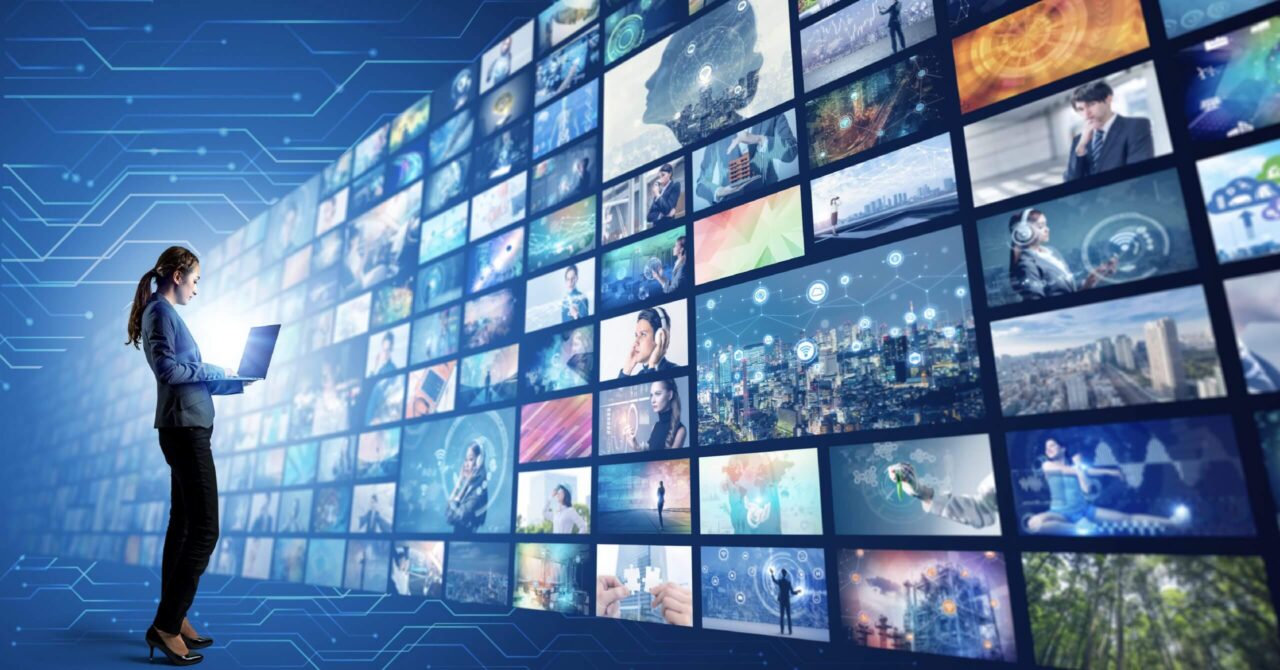Physical Address
304 North Cardinal St.
Dorchester Center, MA 02124
Physical Address
304 North Cardinal St.
Dorchester Center, MA 02124

Era of Data Science

Era of Data Science

Artificial intelligence (AI) is rapidly transforming the media industry, with applications spanning from content creation to distribution and consumption. The integration of AI in media is enabling new possibilities for personalization, automation, and optimization of the media experience.

One of the most significant ways that AI is impacting the media industry is through content creation. AI-powered tools are now able to assist in the production of news articles, video content, and even music and art. For example, AI can be used to generate written articles by analyzing data and structuring it into a coherent story. This can save journalists time and allow them to produce more content in a shorter amount of time.
AI-generated video content is also becoming more prevalent. For example, live sports events can be covered by AI-controlled cameras that can automatically follow the action on the field, rather than relying on human operators. Additionally, AI can be used to automatically edit and produce highlight reels from footage captured by multiple cameras.
AI is also being used in the music industry to compose and produce original songs. Music AI systems can analyze a musician’s previous compositions and use that information to generate new, unique melodies, chord progressions and even lyrics.
AI is also being used to improve the distribution and consumption of media. For example, AI-powered content recommendation systems can analyze a user’s viewing history and preferences to suggest other content they may be interested in. This can help to increase engagement and retention, as users are more likely to watch content that is personalized to their interests.
Additionally, AI can be used to optimize the distribution of media across different platforms. For example, AI can be used to determine the best time to post content on social media platforms, or to optimize the placement of advertisements to maximize engagement and revenue.
AI is also being used to improve the accessibility of media. For example, AI-powered closed captioning and transcription can be used to make video content more accessible to individuals who are deaf or hard of hearing.
Despite the many benefits that AI can bring to the media industry, there are also several challenges and limitations to consider. One of the biggest challenges is the need for large amounts of data to train AI models. This can be a significant barrier for smaller companies and organizations that may not have access to the same amount of data as larger ones.
Another challenge is the need for specialized expertise to develop and implement AI solutions. This can be difficult for media companies that may not have the resources or expertise to invest in AI development.
Additionally, there are concerns about the potential for AI to be used in ways that are harmful or unethical. For example, AI-generated content could be used to spread misinformation or to manipulate public opinion.
AI is rapidly transforming the media industry, with applications spanning from content creation to distribution and consumption. The integration of AI in media is enabling new possibilities for personalization, automation, and optimization of the media experience. However, it is important to consider the challenges and limitations associated with AI development, including the need for large amounts of data and specialized expertise, as well as the potential for harmful or unethical uses of AI.